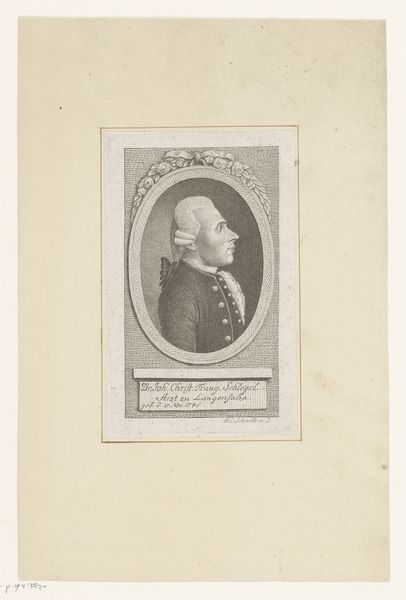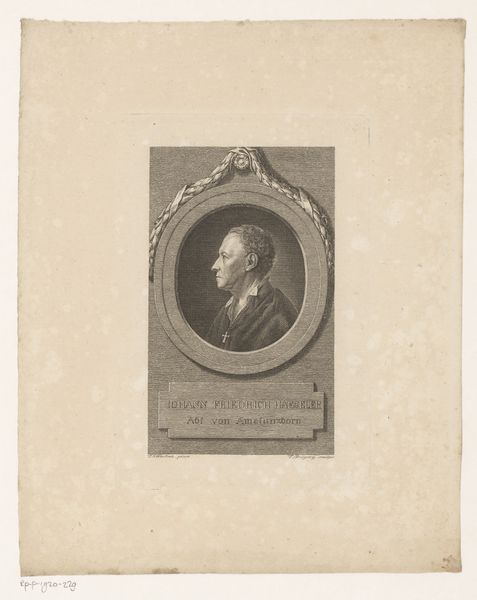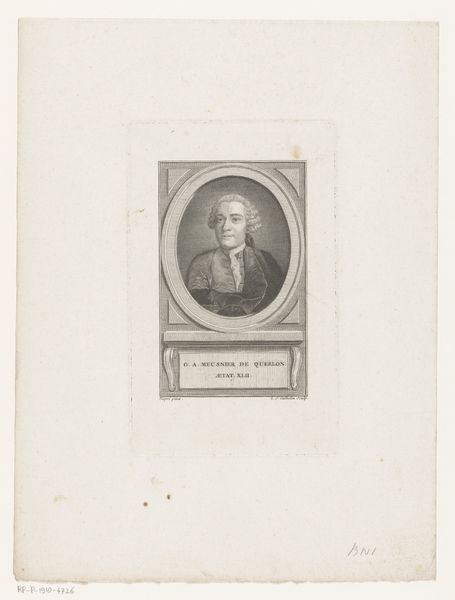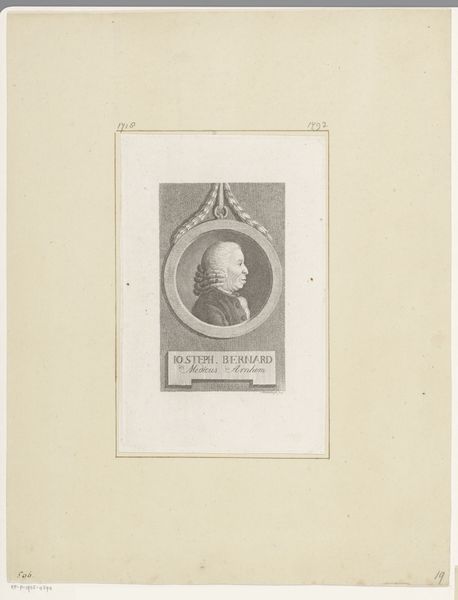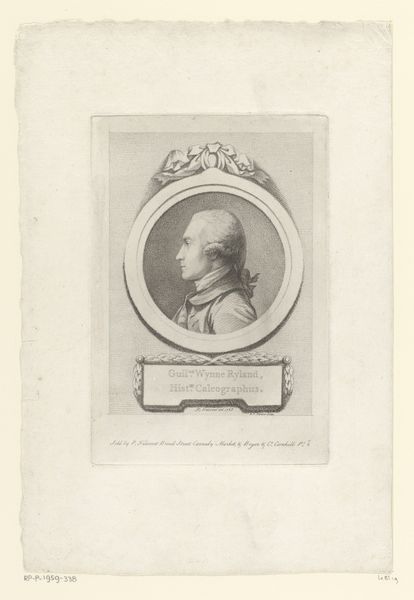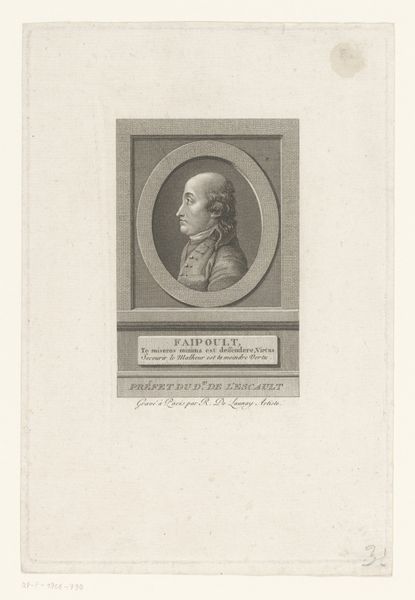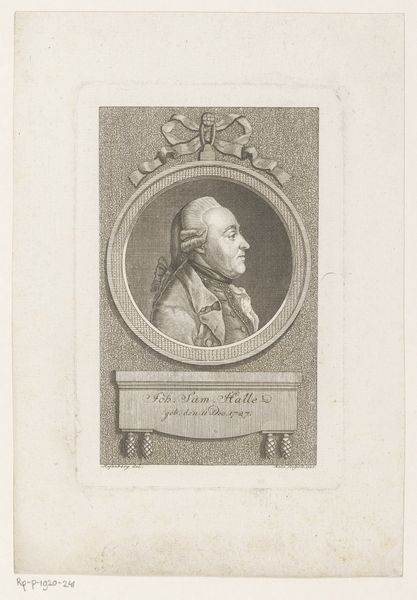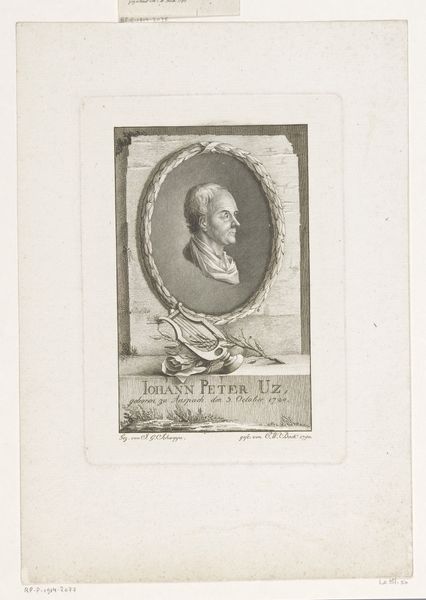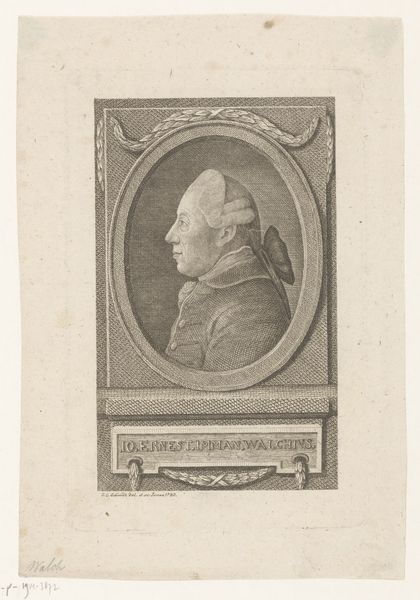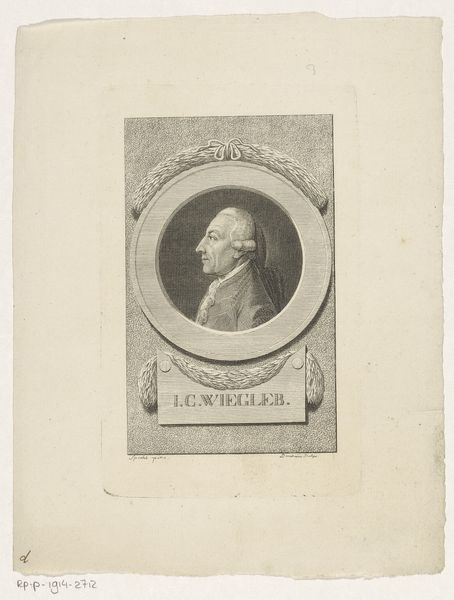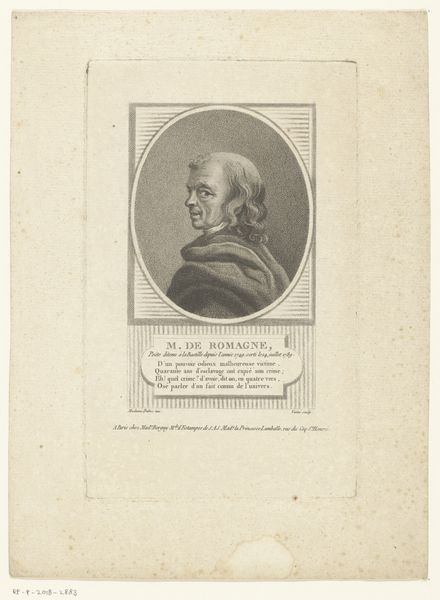
Dimensions: height 200 mm, width 140 mm
Copyright: Rijks Museum: Open Domain
Curator: Here we have an engraving titled "Portret van Torquato Tasso," attributed to an anonymous artist, dating roughly between 1750 and 1800. It's rendered in ink on paper. What are your initial impressions? Editor: A somber, almost melancholy mood. The figure's gaze is directed away, a sense of introspection about him. The delicate line work of the engraving also lends an antique feeling, fitting to its period. Curator: Absolutely. Engraving as a medium involved a complex process. A metal plate, usually copper, was painstakingly incised to create the design. Ink was then forced into these grooves, and the image transferred to paper under immense pressure. This reproductive technology democratized image access to broader audiences, which historically had far less access. Editor: It's intriguing to consider the historical context. Torquato Tasso was a major figure of the late Renaissance, an Italian poet known for his epic "Jerusalem Delivered". I wonder how this image circulated, what meanings it carried for its contemporary viewers during a much later time. The accompanying inscription makes the artwork appear as though the intention was also didactic or memorial. Curator: Consider the engraver’s labor – the focused time and skills to make a single copper matrix capable of yielding numerous copies. Did that change its value? If one has an aesthetic encounter in a context of social or political engagement, can we address traditional questions about quality? Editor: Right. And we should think about class here, who had access to printed images, who were taught to interpret its conventions of portraiture. The engraving situates Tasso within a lineage of literary greats but it does so through visual and material means that exclude a large portion of the public, in fact making literacy another point of cultural hierarchy. Curator: It's tempting to over-romanticize the labor of past artists as if they produced freely of economic and societal demands. These artworks offer concrete opportunities to deconstruct and reconsider traditional notions of genius and authenticity. Editor: Yes, and by recognizing the social conditions embedded within even the simplest printed image, we acknowledge its role in constructing and reinforcing power structures throughout history. It moves the conversation from simple aesthetics to critical engagement. Curator: Ultimately, examining this engraving allows us to investigate the material production and its potential socio-political messages to interrogate these constructions in the context of the museum space. Editor: A worthwhile aim, indeed. Thank you.
Comments
No comments
Be the first to comment and join the conversation on the ultimate creative platform.
